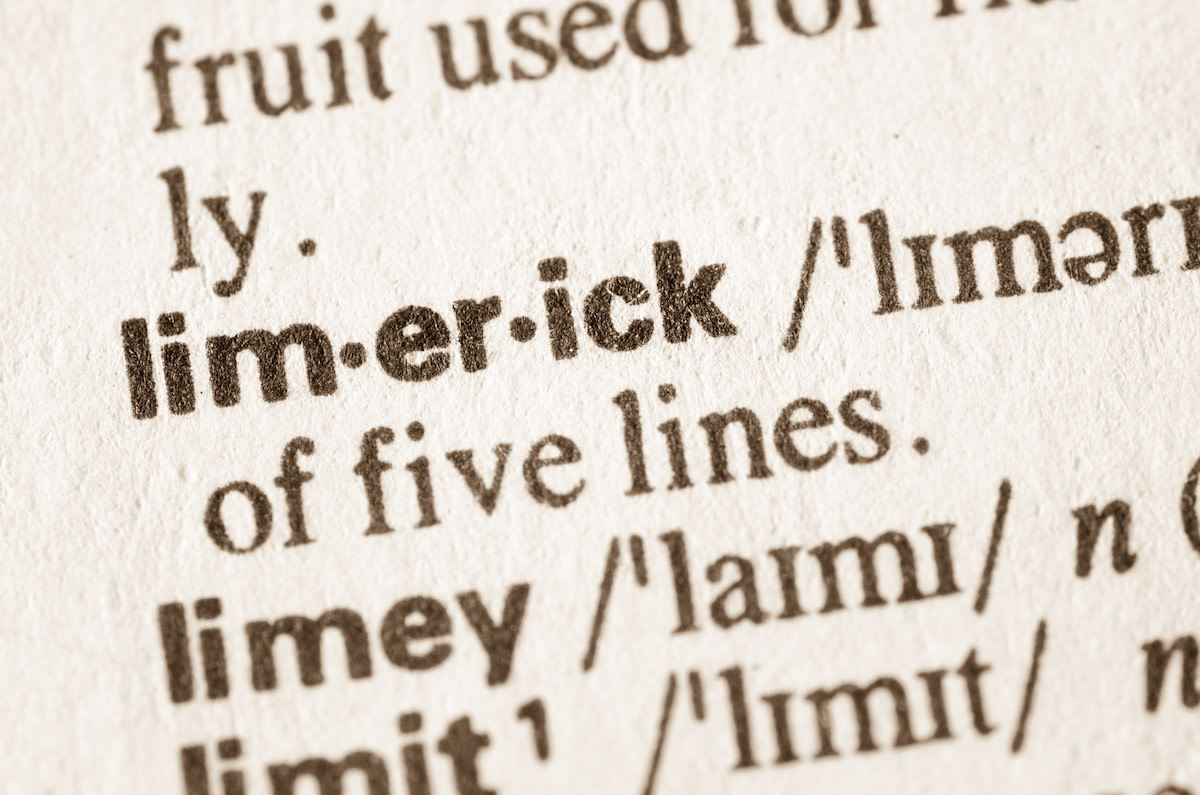Poetry 101: What Is a Limerick in Poetry? Limerick Definition with Examples
Written by MasterClass
Last updated: Jun 7, 2021 • 2 min read
You may have once heard a famous tale of a man from Nantucket. The tale is five lines long, contains rhymes, and, in some versions, contains details that aren’t printable. If you’ve heard this poetic tale, then you know what a limerick is.
Learn From the Best
What Is a Limerick?
A limerick is a five-line poem that consists of a single stanza, an AABBA rhyme scheme, and whose subject is a short, pithy tale or description. Most limericks are comedic, some are downright crude, and nearly all are trivial in nature.
The etymology of the word “limerick” has inspired some debate. Historians agree it is a reference to the Irish city and county of Limerick, but the poems trace back to England, not Ireland. As such, many believe that the word refers to an old tune, “Won't You Come to Limerick?” that featured the same meter and rhyme scheme.
How Is a Limerick Used in Poetry?
Limericks follow a very strict composition structure. All traditional limericks:
- Consist of a single stanza
- Consist of exactly five lines
- Employ one rhyme on the first, second, and fifth lines
- Employ a second rhyme on the third and fourth lines
Due to their short and simple structure, limericks are a popular form among amateur poets. Among established professionals, Edward Lear owns particular fame as a composer of limericks. Born in England in 1812, Lear became associated with a genre termed “literary nonsense.” Embracing the characterization, he published a volume of limericks entitled A Book of Nonsense in 1846. The book contained 117 limericks, most of them intentionally silly. Take “Limerick No. 91”:
There was a Young Lady of Russia, Who screamed so that no one could hush her; Her screams were extreme, No one heard such a scream, As was screamed by that lady of Russia.
The AABBA rhyme scheme of this poem is evident—to the point that Lear uses the same word to conclude Line 1 and Line 5, which was a favored technique. The subject matter is trivial, an attribute that Lear appears to intentionally mine for material, as evidenced by his dogged repetition of the word “scream.”
Examples of Limericks in Poetry
Edward Lear wrote many iconic limericks. Among the most famous of these is the opening poem from A Book of Nonsense:
There was an Old Man with a beard, Who said, 'It is just as I feared! Two Owls and a Hen, Four Larks and a Wren, Have all built their nests in my beard!'
One of Lear’s funnier attempts is “Limerick No. 80” from that same volume:
There was an Old Man who said, 'Hush! I perceive a young bird in this bush!' When they said, 'Is it small?' He replied, 'Not at all! It is four times as big as the bush!'
And of course, there is the famed tale of the man from Nantucket. The printable version, published by Dayton Voorhees in 1902, reads:
There once was a man from Nantucket Who kept all his cash in a bucket. But his daughter, named Nan, Ran away with a man And as for the bucket, Nantucket.
Variations on Limericks in Poetry
Limericks often appear as nursery rhymes. Perhaps the most widely recited of these is “Hickory Dickory Dock”:
Hickory, dickory, dock. The mouse ran up the clock. The clock struck one, The mouse ran down, Hickory, dickory, dock.
The silly, trivial nature of limerick lyrics makes them a natural fit for children’s poetry. That said, adults also enjoy bursts of levity. The existence of these two audiences—adults and children—has helped cement the limerick’s place in popular culture for well over a century.
Learn more about reading and writing poetry with Billy Collins here.
